Now I am the 1st to admit. That I am a coward and that there are somethings. persons and guns. That I will not be around & or use & I don’t care what you think or how much money is involved!
All I know for sure is that Somebody has bigger balls than me, That’s for sure! Especially when this stud up & cranked one off with this Old Veteran!

Category: All About Guns
Curator’s Corner: Colt Cobra
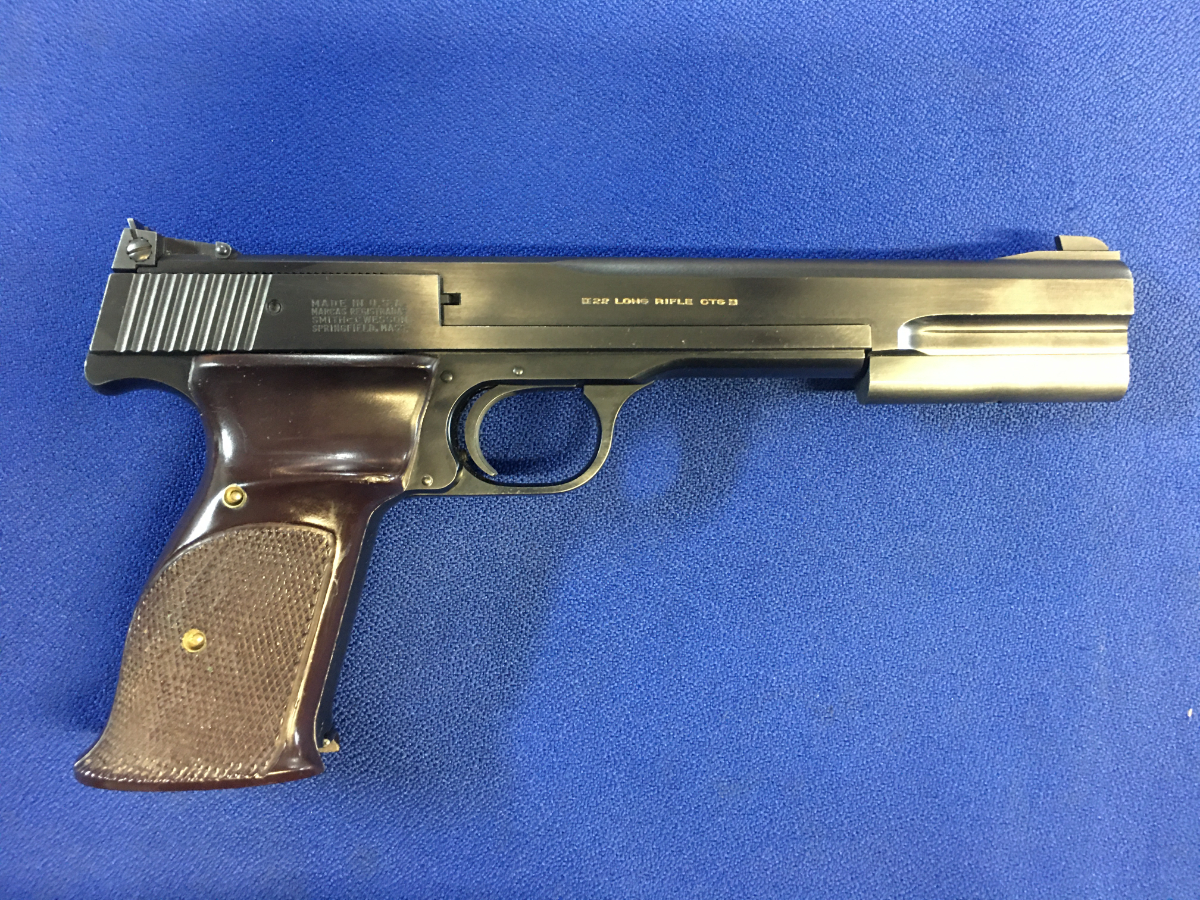



The Smith & Wesson .44 Magnum has a distinctly American backstory. Introduced to much fanfare in 1955 as the “most powerful handgun in the world,” the .44 arrived at a time when we were adding muscle and power to cars, jets and space rockets. The .44 Mag. was a dramatic leap ahead of the previous record holder, the .357 Mag., in a similarly sized, large-frame Smith & Wesson double-action revolver. The revolver now known as the Model 29 was introduced simply as “the .44 Magnum,” and it was a premium product in every respect. This deluxe status followed the precedent of the “Registered Magnums” that accompanied the release of the .357 Mag. cartridge. The .44 Magnum was a real achievement; shooters now had a sidearm that could deliver more energy than many of the popular rifles of the frontier era.
The new Smith .44 was an immediate success and became an iconic symbol for Smith & Wesson. Even now, the wrapper in which Smith & Wesson handguns are shipped are printed with the familiar profile of the original .44 Magnum. Collectors and shooters alike are deeply passionate about the early “Pre-Model 29” .44 Magnum N-frames.
There is something undeniably special about them, and the prices reflect this, with the early revolvers selling for double or triple of what a later sample brings. Smith & Wesson made a relatively small number of the early revolvers before deleting the upper sideplate screw, making the .44 a “four screw” rather than the original five. A short time later, in 1957, the factory adopted model numbers, with the .44 Magnum becoming the Model 29.
Legendary gun writer Elmer Keith lobbied aggressively for what became the .44 Mag. cartridge for many years, and he had this to say in the 1966 printing of his definitive book Sixguns: “The [Magnum] was a masterpiece, both as to accuracy and careful fitting and sighting. In fact, I consider it the finest product of the Smith & Wesson factory.”
Keith quoted a S&W manager who described the new magnum as coming off the assembly line only as fine, hand-fitted, super-grade guns. It is worth keeping in mind that this was at a time that many view as the “golden age” of S&W, so super grade at that time must have really been special.
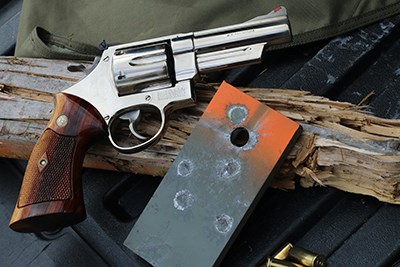 I was recently able to extensively handle and fire a pristine, five-screw .44 Magnum. This Smith was one of only several hundred 4″ models produced in those first years, the bulk of the first thousands produced sporting the heavy, ribbed 6½” barrel. This particular revolver was later returned to the factory for a nickel refinish and appeared to be unfired following that refinish when I first inspected it. Nickel can look a little flashy on many firearms, but, in my book, a nickel 4″ N-frame is one of the most handsome handguns ever made. This sample had a level of polish, fitting and workmanship that was super grade in every sense of the term.
I was recently able to extensively handle and fire a pristine, five-screw .44 Magnum. This Smith was one of only several hundred 4″ models produced in those first years, the bulk of the first thousands produced sporting the heavy, ribbed 6½” barrel. This particular revolver was later returned to the factory for a nickel refinish and appeared to be unfired following that refinish when I first inspected it. Nickel can look a little flashy on many firearms, but, in my book, a nickel 4″ N-frame is one of the most handsome handguns ever made. This sample had a level of polish, fitting and workmanship that was super grade in every sense of the term.
There are a variety of features that distinguish a “Pre-29” or “Five-Screw” Smith from those that would follow in later years. Arguably no single one of these matters, but as a group, they add to the overall richness of the whole. There are the countersunk, recessed-rim chambers that fully enclose the case heads. The repetition of the serial number on the rear of the cylinder and the inside of the ejector-rod shroud adds a touch of class. These parts didn’t just end up together; they were meant to be mated. The screws at the top of the sideplate and the forward curvature of the trigger guard speak to the old manner of assembly—not necessarily better but different, and, with the passage of time, distinguished.
In discussing the Smiths of this era, a highly respected pistolsmith remarked that, by today’s standards of custom, each revolver—particularly the high-end models like the .44 Magnum—were truly hand-built and fitted with “honed lockwork parts,” according to the early advertisements.
This level of fitting is the magic that makes the Golden Era guns so special. However, hand-fitting/honing inevitably yields a level of variability from revolver to revolver. They will certainly all meet the expected standards, but the feel of how the parts interact can be distinct from one N-frame to the next.
There is a uniqueness to the timing and trigger pulls on the big Smiths that seem to be the personality of the big-belt guns. This particular Pre-29 has a precision to the timing that is an enduring testament to the mastery of the craftsman who fitted it. Cocking this .44 Magnum is an experiential sonnet of American exceptionalism in the post-war era.
Rolling through the double-action pull is a real treat. It is almost perfectly smooth and even, the heavy-profile short barrel holding the front sight relatively still in the notch as the big hammer retracts and falls. Weight of the pull measures 10 lbs. but feels lighter. I often marvel at how a big Smith can rotate and lock a rather large cylinder and simultaneously cycle that target hammer while the shooter simply feels a smooth, even pull. There may be a lot of physical work being done, but the beauty of leverage and careful polishing hides it all from the shooter. There are more than a few double-action semi-automatics where the shooter feels like he or she is doing a lot of work and feeling a bunch of parts rub together to simply retract and drop a little hammer.
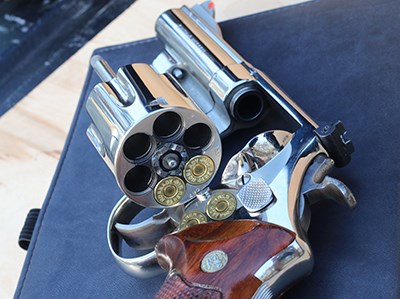 Rolling double-action shots onto somewhat challenging targets is one of my favorite shooting pastimes. I have the great fortune of being able to shoot a wide variety of firearms and in different settings. Shooting this S&W with low-pressure .44 Spl. loads is just plain fun. I tried Black Hills’ 210-grain lead flat points, as well as Magtech 240-grain jacketed flat points, and both are pushing mass and velocity that were considered serious manstoppers in days of yore. The feel through the N-frame magnum, though, is surprisingly mild. Casually connecting on my 3″x6″ steel “truth teller” target in double action from about 25 yards was pure joy.
Rolling double-action shots onto somewhat challenging targets is one of my favorite shooting pastimes. I have the great fortune of being able to shoot a wide variety of firearms and in different settings. Shooting this S&W with low-pressure .44 Spl. loads is just plain fun. I tried Black Hills’ 210-grain lead flat points, as well as Magtech 240-grain jacketed flat points, and both are pushing mass and velocity that were considered serious manstoppers in days of yore. The feel through the N-frame magnum, though, is surprisingly mild. Casually connecting on my 3″x6″ steel “truth teller” target in double action from about 25 yards was pure joy.
One could shoot nothing but Specials in the .44 S&W and be perfectly happy. However, the whole point of the model was the introduction of the .44 Mag. cartridge, and the Smith takes on an entirely different character when the magnums are nestled into those recessed chambers. You simply don’t get to push 800 ft.-lbs. of energy out of a 42-oz. revolver without noticing it. The carry-friendly 4″ barrel ensures that the ignition is regularly accompanied by a fearsome daylight fireball, and the velocity makes a violent racket. I can imagine that the experience was jarring to the 1950s shooting public baselined on firing mild .38 Spls., with either no or ineffectual hearing protection. Many of those shooters undoubtedly formed the “For sale: used, like-new, fired only six shots” story that has been so often repeated.
The stocks on those early guns are a story of their own. Known widely as “Cokes,” the striking gonçalo alves wood was a departure from traditional walnut, and they were shaped with a mild curvature and swell that resembles an old-fashioned bottle of Coca Cola. The shaping and fitting on the stocks is, well, magnificent. They feel great in the hand, work well in both single- and double-action modes and handle recoil reasonably well. Smith & Wesson kept the basic profile of the stocks, but, over time, the later renditions became increasingly large, square and blocky—until they almost single-handedly boosted the aftermarket replacement makers such as Pachmayr. One indication of just how good the old Coke stocks were can be found in the current price of a set being sold separately from its magnum. Shooter-grade sets that show their age often go for more than a new J-frame revolver. Pristine sets can go for as much or more than a complete shooter-grade Model 29 from the later decades.
Recoil in the S&W was at the level where an experienced shooter can manage it in moderate doses. A somewhat-seasoned shooter can tolerate it for a few occasional shots in the field or the range, and a novice may either enjoy the experience or be mildly scarred, depending on their outlook. There is no doubt that serious energy is being unleashed, and the experience was intense with full-power loads.
Lighter .44 Mag. revolvers are now relatively commonplace, but the original may still be one of the best compromises—light enough to carry but heavy enough to shoot and control the significant energy being launched. Magnums that are more pleasant to shoot tend to be inconveniently heavy and unlikely to be carried far or often. Really light .44 Mag. revolvers are at their best with moderate .44 Mag. loads, with many shooters finding them downright unpleasant or even painful with stout ammunition.
I find one of the most significant shooting challenges out there is shooting groups with a heavy-recoiling magnum. For me, it is a test of willpower and discipline like few others—not quite as hard as walking by a plate of cookies fresh from the oven without taking one, but still very hard. I spent the bulk of my adult life in the Marine Corps, where discipline is valued like gold bullion, and I find nestling behind a carry-weight magnum and trying to shoot to its potential to be at once intimidating and a worthy challenge. The Pre-29s have a reputation for accuracy, but you have to not flinch as the gun bucks and roars to prove it.
The 1956 gun shot every bit as well as its legendary status would suggest. Federal 220-grain solid-copper hollow points printed a 1.2″ 25-yard group, and American Eagle 240-grain soft points fared just under 0.2″ larger. Black Hills’ 240-grain JHPs roared into 1.42″ and the company’s 160-grain fluted Honey Badgers cut their distinctive holes into 1.2″ clusters.
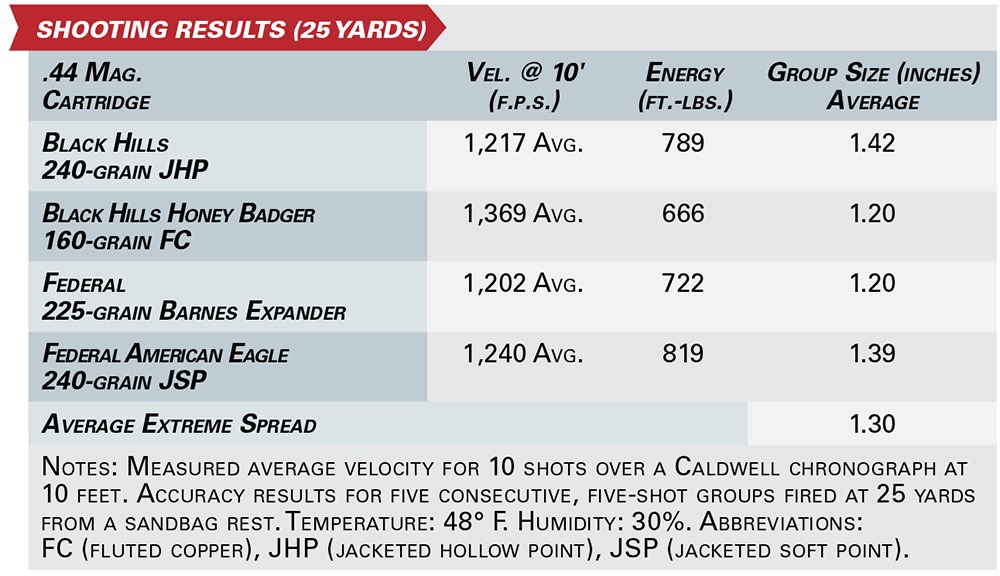
When I saw how well the .44 Magnum shot, I was happy and a little relieved. I then started thinking how to put some practical challenges to the S&W. Not quite Elmer Keith’s famous shots dispatching a wounded mule deer escaping at 600 yards with his magnum, but what might I be able to do with this particular one? I had been working on a rifle at 100 yards, and had, on a whim, fired four of the Federal 220s over a barricade at a bullseye, grouping just off the paper in a spread I could cover with my hand. The Black Hills 240s hit very nearly dead-on at 100 yards with no sight change, so I set up a Defense Targets 9.5″x20″ reduced steel silhouette and set forth to make it ring.
I rested the revolver on a beanbag rest flopped over a sawhorse and knelt down solidly behind it getting my natural point of aim set and thinking positive thoughts. I gently added pressure to the curved target trigger, a special, deluxe feature that was introduced as standard on the .44 Magnum, and the blast of the shot melded into the deep bass tone of the steel being rung hard at center. The next three shots felt equally good, and I could almost make out the splatter on the target forming a group right under where I was holding the front sight. On the fifth shot I didn’t give the trigger press 100 percent of the respect it deserved and called the shot a touch left. At 100 yards, “a touch left” pushed the impact more than 5″ from the center to the edge of target; it served as a reminder of the level of concentration required.
I redoubled my efforts and knew, as the S&W rocked upward, that the shot was good. The 100 yards down to the target was one of those walks where you think something special just happened and are eager for the paces to bring you into visual confirmation that the group you think you saw is what is actually there. The super-grade magnum had hammered those .44-cal. JHPs into a 4.6″ group on the steel.
There have been tens of thousands of S&W .44 Mag. revolvers made since that dramatic launch some 65 years ago. There have been both larger and smaller magnum revolvers from numerous makers and a half dozen or more cartridges that eclipse the power of the .44. Nonetheless, to this day, the .44 Mag. retains a mystique, and its original Smith & Wesson N-frame platform an aura that extends beyond the shooting world and into the popular culture. Any shooter lucky enough to examine one of the early Pre-29s is likely to string a bunch of very complimentary adjectives together. After some long deliberation, I chose just one that I think suits its power, old-world quality and grace … and that is majestic.
Sniper Scene – My Way

Time is a flat circle, and what is old will invariably be new again, especially if it didn’t suck the first time. It seems the wheel has come around for the Browning Hi-Power 9mm pistol. Born from a John M. Browning pistol design created not long after he finished changing gun history with the 1911, it was the first successful “high-capacity” semi-auto handgun that was produced constantly for about 80 years. Now, at the dawn of the 2020s, at least three gunmakers have revived the Hi-Power with modernized takes on the full-size, steel-framed, single-action semi-auto with a double-stack magazine.
Are these firearm companies testing the waters to gauge the gun buying public’s appetite for nostalgia in their new-handgun diet? Are people getting sick of an endless parade of polymer-framed 9mm pistols optimized for concealed carry? All the many fans of CZ’s steel-framed handguns and the still loyal legions of 1911 devotees might say so.
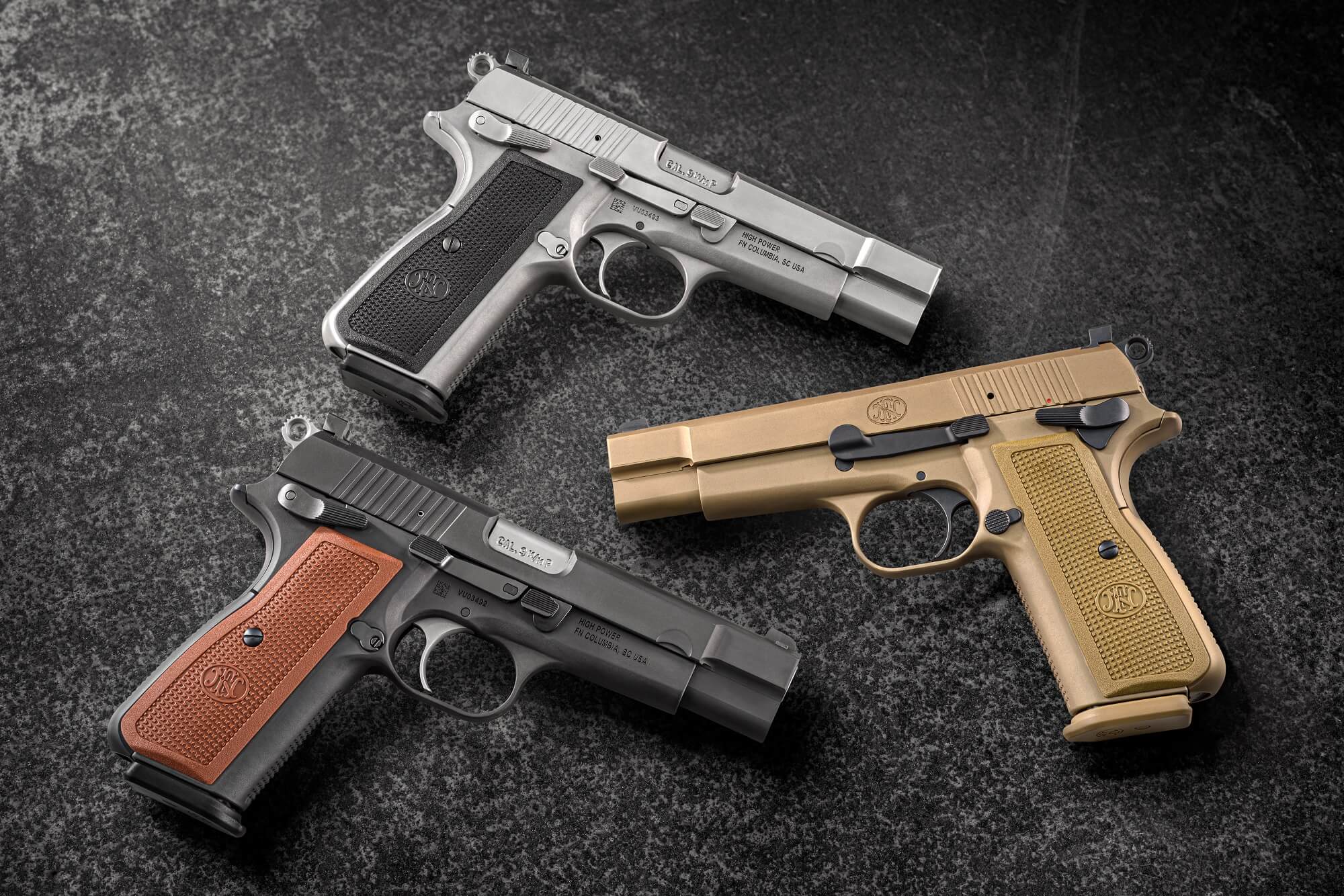
Whatever is inspiring this renaissance for the Hi-Power, gun buyers who have always wanted one, especially since 2018 when FN (Fabrique Nationale) ceased producing the last iteration of the Hi-Power under its Browning Arms brand, now have choices to make.
The Belgian gun giant is back in the Hi-Power business with the revamped FN High Power handgun introduced this week at the 2022 SHOT Show. A few months ago, Springfield Armory announced its updated version of the pistol in the form of the SA-35, and in the lead-up to SHOT, European American Armory (EAA) announced its take on the handgun with the Girsan MC P35.
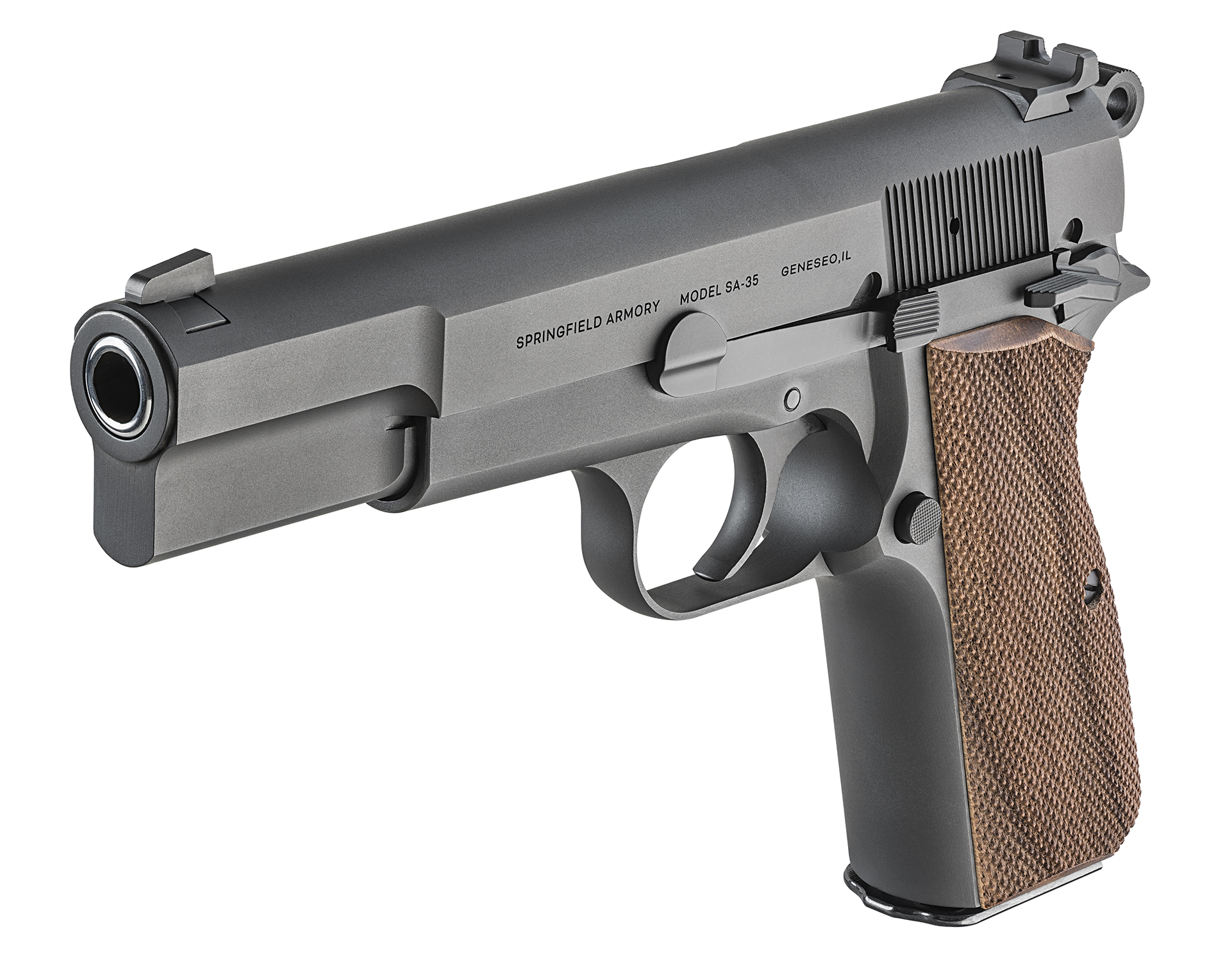
Let’s take a look at each and see if they are true updates that hold to Browning’s original design with needed improvements (it’s a legendary pistol, but it wasn’t perfect), or if these are just replicas of a discontinued firearm that aren’t really made to be run hard.
Since they announced their gun first, and since Free Range American contributor and gun historian T. Logan Metesh got some recent trigger time with it, we’ll look at the SA-35 at the top — but first, a little bit of info download on the original Hi-Power. — David Maccar
RELATED – How the Winchester Model 70 Nearly Made Lever-Actions Obsolete
Browning Hi-Power History
Browning worked on the design for what became the Hi-Power pistol after his military and commercial success with the 1911. For all intents and purposes, the Hi-Power was an evolution of the 1911. It had similar stylings visually and was a locked-breech, single-action semi-auto that incorporated a manual thumb safety. At the same time, it was a decidedly different gun, for legal reasons.
When Browning was working on the Hi-Power, Colt owned the rights to the 1911’s design elements. So, he had to work around his own patent to create this new 9mm pistol.
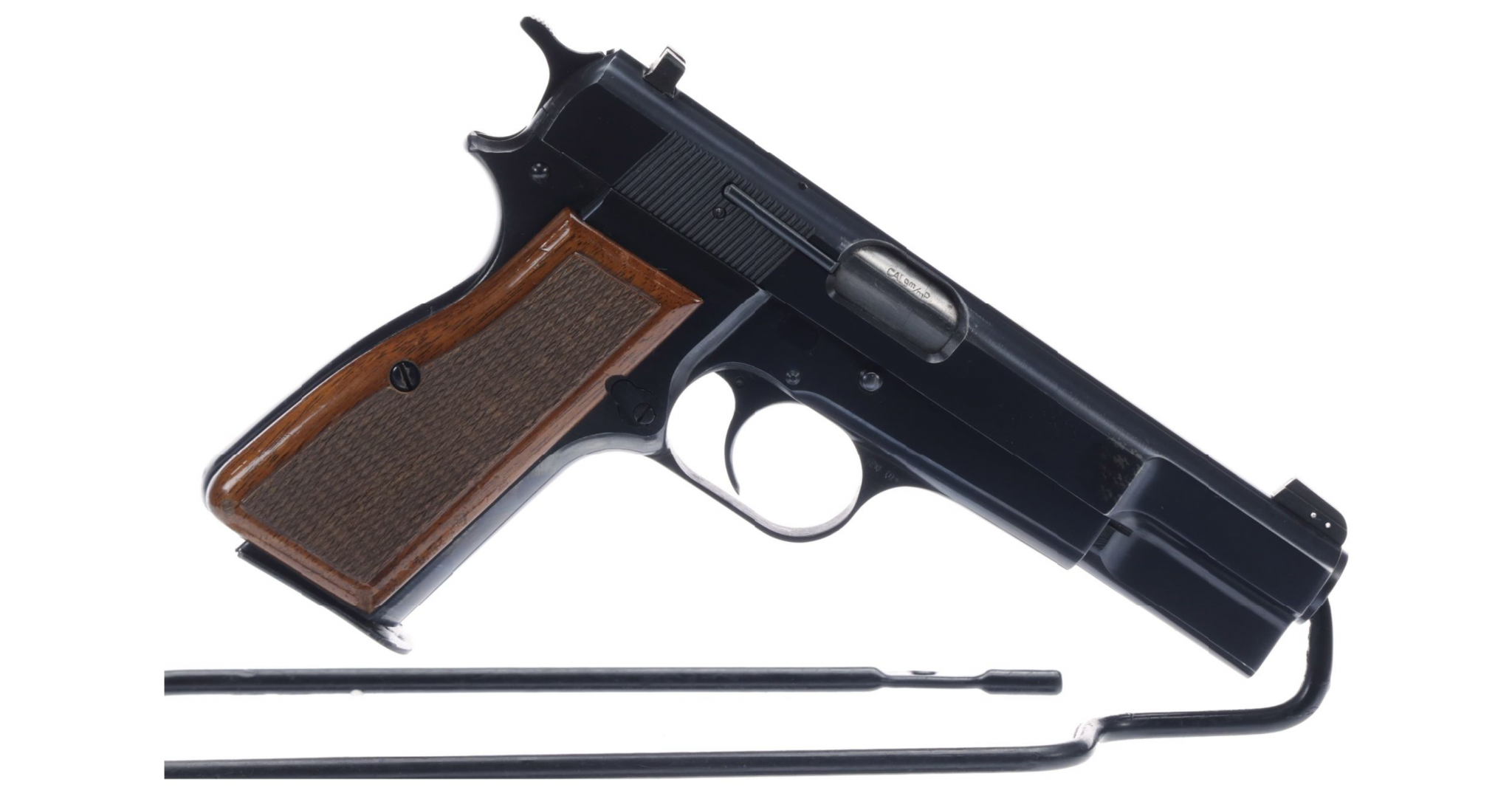
Let’s talk about that first — the chambering. The Hi-Power was designed for the 9mm Luger cartridge, which was quite a bit narrower than the fat .45 ACP, which allowed for a higher capacity, double-stack magazine in a similarly sized handgun. It held nearly twice as many rounds with a 13+1-round capacity compared to the 1911’s 7+1 capacity. This was a crucial part of the French military’s design requirements for a new sidearm, which was the impetus for the gun’s creation in the first place, though it would never fill that role. The “high” capacity magazine is what the gun’s name refers to.
The Hi-Power also lacked the 1911’s grip safety, but it had a magazine disconnect safety that the 1911 did not have — another French stipulation.
While the eminent gun designer rightly deserves a great deal of credit for the Hi-Power, the credit for the gun’s final form does not all belong to him. Browning died in 1926, a decade before the gun hit the market.
An FN Herstal employee named Dieudonne Saive saw the Hi-Power through to completion. The 1911 patents held by Colt expired in 1928, so Saive was permitted to make some changes and improvements to Browning’s initial design.
In 1935, the gun was finally released and it was adopted by the Belgian military as the P-35. Over the following decades, the Hi-Power was adopted as the official sidearm of military and law enforcement agencies in dozens of countries, including NATO. Ironically, France was not among them.

Interestingly, FN continued manufacturing the pistol during WWII after Belgium was taken by the Germans. At the same time, it was being produced in Canada for the Allies, making it the only service pistol to be used by both sides in the European Theater.
The Hi-Power set the standard for high-capacity 9mm pistols for many years. In the mid-80s, Beretta’s 92 series in 9mm was adopted by the US military with standard mags that held 15 rounds (mags for the Hi-Power with the same capacity were eventually available). SIG Sauer introduced its 9mm P226 around the same time in 1985 with the same capacity. Then, the polymer-framed Glock came along with its 17-round mags and ushered in the era of “wonder nines.”
By 2018, the winds of change had blown strong enough for FN to cease production of the Browning Hi-Power models still in its catalog. While the gun was no longer available, there was still considerable demand for the pistol, and it seems to have grown. The price of used and old-stock Hi-Powers went up and up over the past few years and a few clones made by various companies overseas tried to fill the gap, but it just wasn’t the same — kind of like the Italian-made replicas of Colt Peacemakers. Sure, it looks the same and essentially functions the same, but it is not the same. We still don’t have a true blue Hi-Power that can be bought new, but we have some really great modernized options in its place. — T. Logan Metesh
RELATED – Most Expensive Guns: The 6 Priciest Firearms Ever Sold at Auction
Springfield Armory SA-35
Capacity: 15+1
Ambidextrous Controls: No
Weight: 31.5 ounces
Special Features: Proprietary recoil system and guide rod
MSRP: $699

When Springfield Armory announced the SA-35 in October 2021, shooters and gun collectors alike rejoiced. In fact, they rejoiced so loudly and fervently that demand far outpaced production. When I asked Springfield if I could get my hands on one, I was told the wait would be “quite a while” and when I picked the gun up from my gun shop, the guy at the counter wouldn’t even say the make and model out loud. Apparently, they had quite the waitlist for it at the shop, and whenever someone mentions the SA-35, it “causes a swarm at the counter.”
So how does this re-release of an 80-year-old handgun design from Springfield that was last produced by a different company measure up?
This is not a Browning Hi-Power. Let’s get that straight. Also, let’s understand that there’s nothing wrong with that. Springfield is not trying to gaslight anyone into thinking that it is. I think that’s exactly why it’s been so popular.
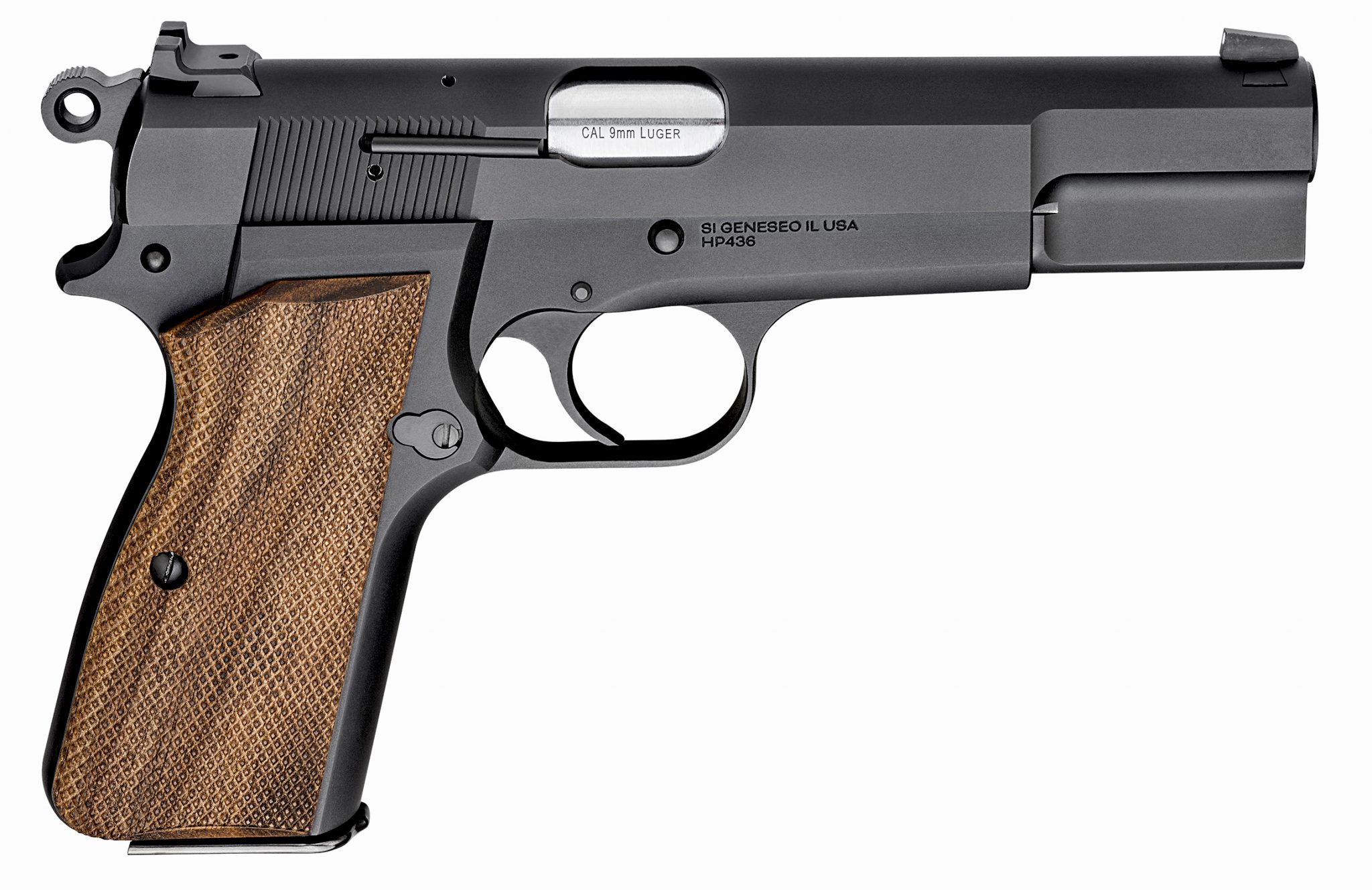
Springfield has created an evolved pistol with features that OG Hi-Power owners often added as aftermarket alterations, like eliminating the magazine disconnect safety (which leads to a better trigger pull), using a rounded hammer that’s less likely to cause hammer bite, a re-profiled beavertail, bevels on the magwell, and a flush-fit magazine that holds 15 rounds instead of the original 13 rounds. It also comes in at an attractive price point for an all-steel gun.
Another big difference, which has garnered some complaints online since the gun’s release, is the finish. The SA-35 sports a matte carbon steel finish on the frame and slide, which is visually quite different from the polished blueing found on many Hi-Powers. The sample gun I received had a uniform finish that is attractively executed.
On to the nuts and bolts: It’s just as easy to disassemble the SA-35 as it is to break down an original Hi-Power since much of the gun’s design is exactly the same. The SA-35 comes with checkered walnut grips, much like early versions of the Hi-Power. The SA-35 isn’t made in Belgium like the original pistol was or in Croatia like many of Springfield’s firearms are, but right here in the United States.
Since Springfield deleted the magazine disconnect, which caused the famous grittiness in Hi-Power triggers even though they were single-action, the trigger on the SA-35 is really nice and crisp. This is perhaps the best update they made to the original design.

I ran 150 rounds through the gun that were a mix of factory ammo and reloads — with ammo availability and prices these days, that was about all I could manage.
The 15-round magazine functioned flawlessly, but notice that’s a singular “magazine.” It only comes with one. That’s annoying for any firearm, let alone a gun that uses mags retailing for $38.99 each from SA. But…the SA-35 can use old Hi-Power mags if you happen to have some.
The SA-35 ran perfectly for my grandfather, who was with me at the range that day, but I was having some trouble with my high, thumbs-forward grip — I kept partially engaging th thumb safety under recoil every few rounds. Gramps tucks his thumb, so he wasn’t having that problem. I had to alter my grip and ride the safety with my thumb like a 1911. The safety itself was a little mushy and would benefit from a more pronounced detent.
That aside, during my limited time with the SA-35, I loved it. I particularly liked the Springfield “Tactical Rack” U-notch rear sight, which can also be found on the company’s popular Hellcat pistols. It’s an outstanding reinterpretation of the Hi-Power that’s well made and that a lot of people can actually afford. — TLM
RELATED – Hunting History: How Firearm Tech Changed the Way Americans Hunt
FN High Power
Capacity: 17+1 or 10+1
Ambidextrous Controls: Yes
Weight: 40 ounces
Special Features: FN 509-style takedown, black, FDE, and stainless finishes available
MSRP: $1,269 – $1,369

While Springfield was conservative with its update of the Hi-Power and stayed fairly true to the original design, FN brought the pistol back to its roots while going all out to deliver what could be called a thoroughly modernized version with the new High Power pistols — short of giving it a plastic frame.
First off, it came out of the gate with options: the new High Power is available with three frame colors and seven G10 and wooden grip options — and each pistol comes with two different sets of grips. You can rock the classic black slide and frame with brown wooden grips for the throwback look, or go with a more modern all-FDE gun with green G10 grips. Plus there’s the stainless model — but a dual-toned stainless slide on a black frame option is absent at the moment.

The contours and shape of those grips are unmistakably FN. Like the SA-35, the original design’s magazine disconnect has been deleted, so the single-action trigger should be pretty sweet.
The High Power features updated ergonomics and a new fire control design, making this a lot more than a Hi-Power clone. FN also gave the pistol a capacity boost — it ships with two 17-round magazines.
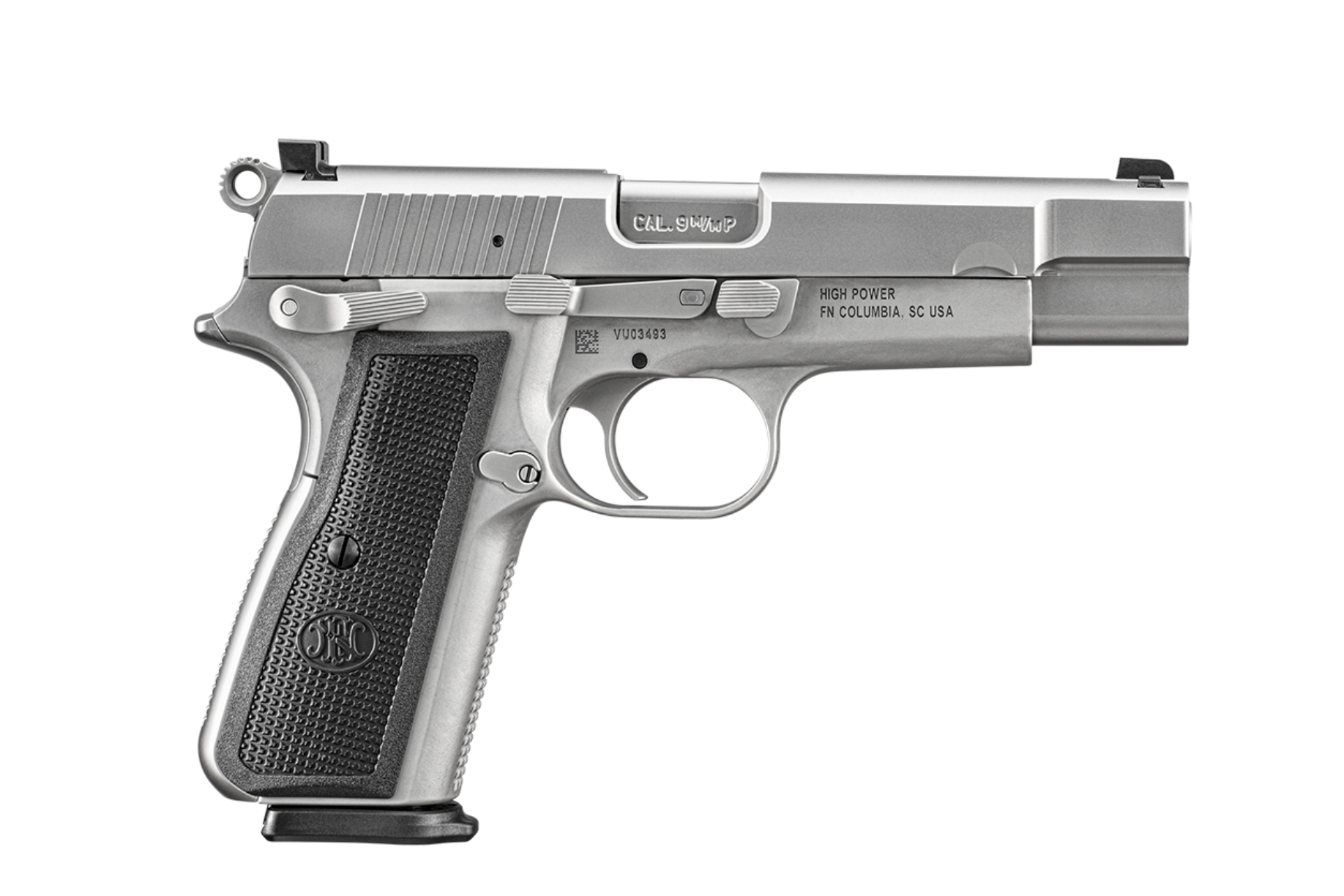
The gun is a little heftier than the Springfield (40 ounces), but lightweight isn’t exactly the goal here. Additional ounces will just make this pistol more of a pleasure to shoot. One of the biggest changes FN made was to the gun’s takedown process. An old Hi-Power, and the SA-35, tear down a lot like a 1911 does, just without a barrel bushing.
The FN High Power comes apart just like the company’s striker-fired FN509 series of pistols, with no pin to remove. When field stripped, the parts consist of a slide, barrel, recoil spring, and frame just like most modern handguns, making the learning curve for those born and raised on striker guns less steep.
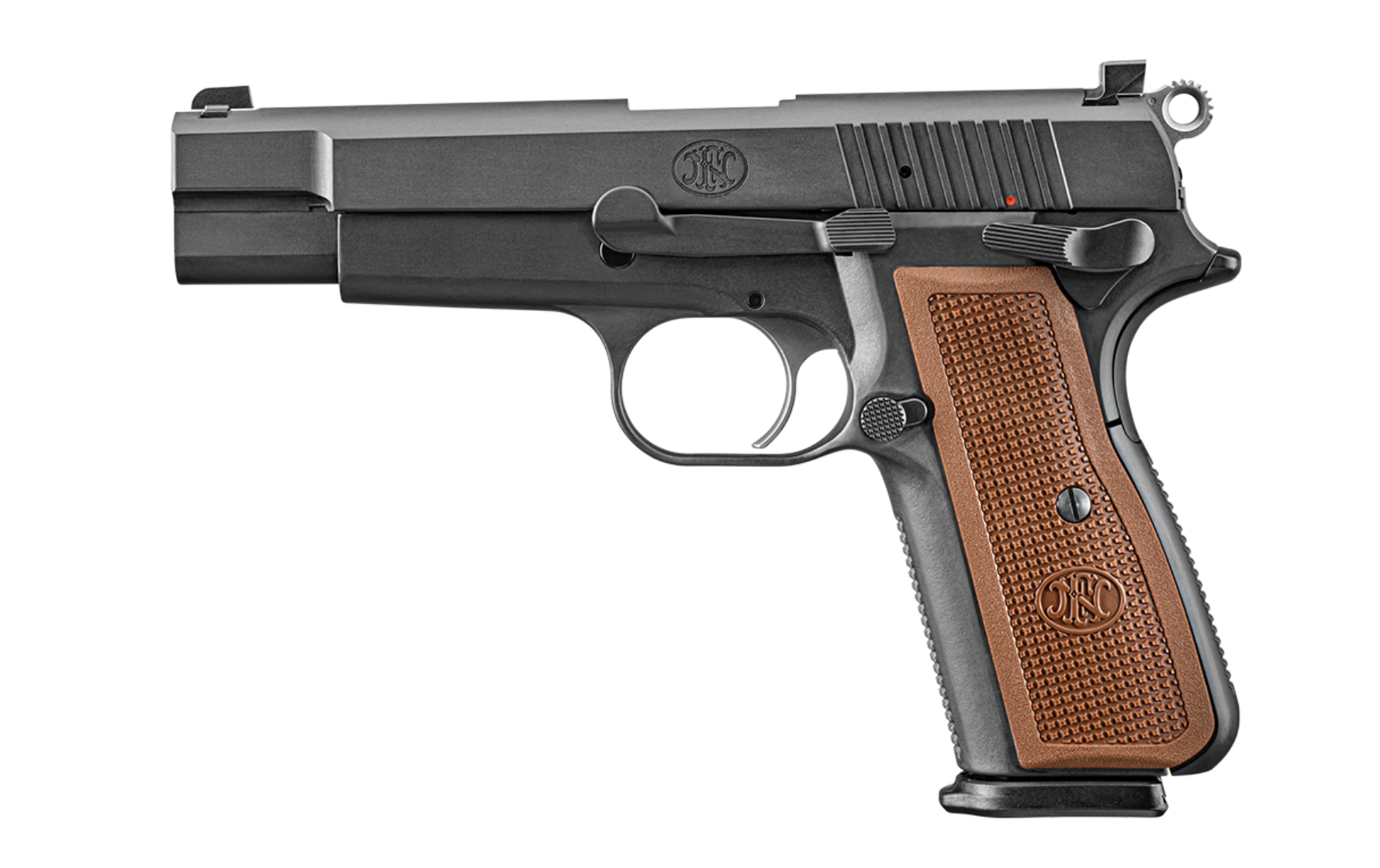
It also features full ambidextrous controls (the magazine release is reversible for lefties), an extended beavertail, a raised hammer, oversized ejection port, a polished feed ramp and chamber, and a cold hammer forged barrel. The slide comes topped with driftable steel blackout sights set in the FN 509 dovetail pattern and the frame and slide sport a PVD finish.
People who have been drooling over the SA-35 must have passed out when they saw this gun — or when they saw that it costs twice as much as the Springfield, one or the other. — DM
RELATED – The Remington 870 Shotgun: 5 Most Badass Movie Moments
EAA Girsan MC P35
Capacity: 15+1
Ambidextrous Controls: Thumb safety only
Weight: NA
Special Features: External extractor, polymer grip panels
MSRP: $528
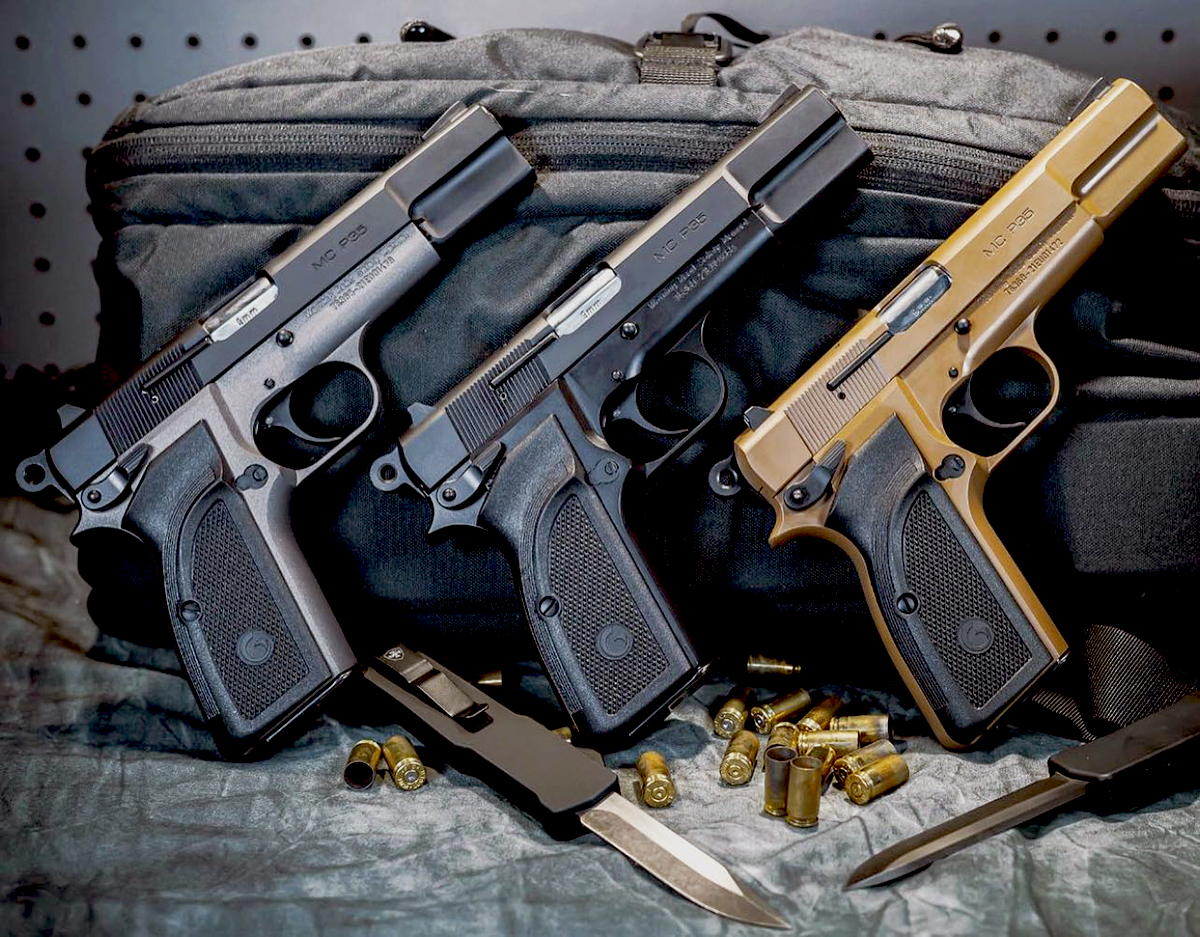
This Turkish-made Hi-Power clone is the budget gun of the bunch, coming in with a retail price that’s roughly $170 less than the SA-35, and about $740 less than the High Power. The MC P35 is extremely faithful to the original pistol’s design. It even includes the magazine disconnect that was omitted by Springfield and FN, but Girsan chose to go with expanded 15-round magazines and not the original 13.
The all-steel pistol comes in three matte finishes (black, FDE, and two-toned stainless and black) and includes a driftable rear sight and the traditional slim trigger found on the Hi-Power. This allows for more room inside the trigger guard, so it’s easier to fire the pistol while wearing gloves without having an oversized guard.
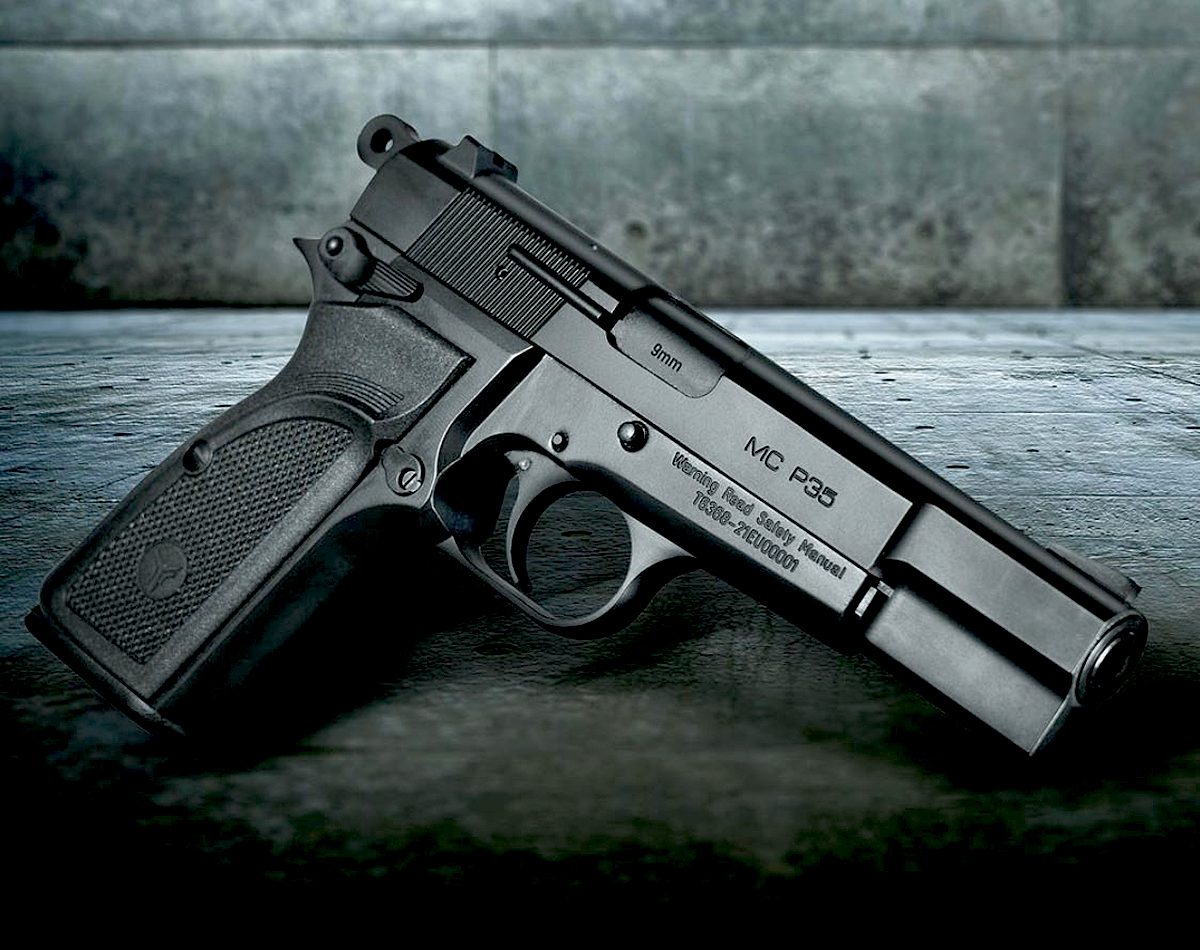
While the magazine release and slide stop are set up for righties, the MC P35 comes with an ambidextrous thumb safety. This offering may seem a little plain, but consider that i has a lower price point than the Springfield, it’s available in a variety of colors like the much more expensive FN, while the SA-35 comes with a blued carbon steel finish and walnut grips only — for now.
When and if Springfield expands the line to include a few more options, it will be kind of tough to justify going with an MC P35, unless its real world price is considerably lower and range tests prove it to be reliable. It certainly looks the part of a faithful Hi-Power reproduction that doesn’t offer many modern features — and that may very well be exactly what you’re looking for in a gun like this. —DM
READ NEXT – Cabot Guns Paves the Way for Firearm NFT Sales With Its Moonshot 1911